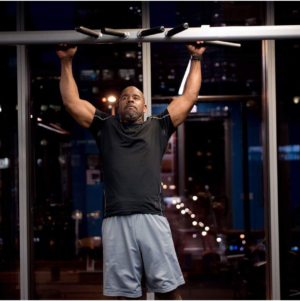Are you a senior looking to stay active and healthy but concerned about the potential strain on your joints and muscles? Low-impact workouts may be the perfect solution for you! In this article, we will explore the numerous benefits of incorporating low-impact exercises into your fitness routine.
What are Low-Impact Workouts?
Low-impact workouts are exercises that are gentle on the joints and minimize the risk of injury. These types of exercises are perfect for seniors or individuals with joint pain, arthritis, or other mobility issues. While low-impact workouts may not be as intense as high-impact exercises, they can still provide an effective workout and help improve overall fitness levels.
Benefits of Low-Impact Workouts for Seniors.
Low-impact workouts offer a range of benefits for seniors, making them an excellent choice for maintaining physical health and overall well-being as we age. Here’s a more detailed look at the advantages:

1. Reduced Risk of Injury:
One of the primary benefits of low-impact workouts is the significantly reduced risk of injury. These exercises are designed to be gentle on the joints, which is particularly important for seniors who may have more fragile bones, experience joint pain, or suffer from conditions such as osteoporosis. Unlike high-impact activities that involve jumping or rapid, jarring movements, low-impact exercises like swimming, cycling, and walking allow seniors to stay active without the fear of aggravating existing conditions or causing new injuries. This gentler approach helps maintain a consistent exercise routine, which is crucial for long-term health.
2. Improved Joint Health:
Low-impact workouts play a vital role in maintaining and improving joint health, especially for seniors who may be dealing with arthritis or other joint-related issues. These exercises promote better flexibility and increase the range of motion, helping to keep the joints lubricated and functional. Activities like water aerobics or yoga are particularly beneficial as they allow for movement without putting undue stress on the joints. Over time, regular participation in these workouts can lead to reduced stiffness and pain, making it easier for seniors to perform daily activities with greater ease and comfort.
3. Enhanced Cardiovascular Health:
While low-impact workouts may not involve the same intensity as high-impact exercises, they are still highly effective at improving cardiovascular health. Engaging in activities like brisk walking, swimming, or using an elliptical machine helps strengthen the heart, improve circulation, and lower blood pressure. For seniors, maintaining cardiovascular health is crucial as it reduces the risk of heart disease, stroke, and other cardiovascular conditions. Moreover, these exercises help enhance overall stamina and endurance, allowing seniors to stay active and participate in more extended periods of physical activity without experiencing excessive fatigue.
4. Increased Muscle Strength:
Building and maintaining muscle strength is essential for seniors to preserve their independence and reduce the risk of falls. Low-impact exercises like resistance band training, bodyweight exercises (such as squats and modified push-ups), and light weightlifting help to strengthen muscles without placing too much strain on the joints. By incorporating strength training into a regular fitness routine, seniors can improve muscle tone, support joint stability, and enhance their ability to perform everyday tasks, such as carrying groceries or climbing stairs. This muscle preservation is key to maintaining a higher quality of life as we age.
5. Better Balance and Coordination:
As we get older, our sense of balance and coordination naturally declines, increasing the risk of falls and related injuries. Low-impact workouts can significantly improve these areas by focusing on exercises that enhance core stability, leg strength, and overall body awareness. Practices such as tai chi, balance exercises, and specific yoga poses are particularly effective in promoting better balance and coordination. By regularly engaging in these activities, seniors can reduce the likelihood of falls, which is a major concern for this age group, and maintain greater independence in their daily lives.
Overall, low-impact workouts provide seniors with a safe, effective way to stay active, improve their health, and enjoy a higher quality of life. By incorporating these exercises into their routine, seniors can reap the physical and mental benefits of regular exercise while minimizing the risks associated with more intense forms of physical activity.

How to Get Started with Low-Impact Workouts.
If you’re ready to reap the benefits of low-impact workouts, here are a few tips to help you get started:
- Consult with your healthcare provider: Before starting any new exercise routine, it’s important to consult with your healthcare provider to ensure that it’s safe for you.
- Start slowly: Begin with short sessions of low-impact exercises and gradually increase the intensity and duration as your fitness level improves.
- Mix it up: Incorporate a variety of low-impact exercises into your routine to keep things interesting and target different muscle groups.
- Listen to your body: Pay attention to how your body feels during and after exercise. If you experience pain or discomfort, stop and consult with your healthcare provider.
- Stay consistent: Consistency is key when it comes to reaping the benefits of low-impact workouts. Aim for at least 30 minutes of exercise most days of the week.
Conclusion
In conclusion, low-impact workouts are an excellent option for seniors looking to stay active and healthy without putting too much strain on their joints. By incorporating these gentle exercises into your fitness routine, you can enjoy improved joint health, increased muscle strength, and better balance and coordination. So why wait? Start reaping the benefits of low-impact workouts today!


